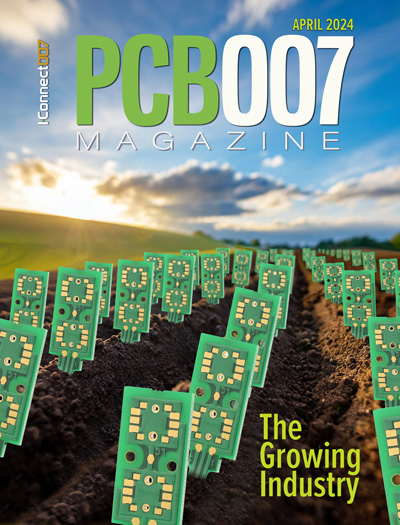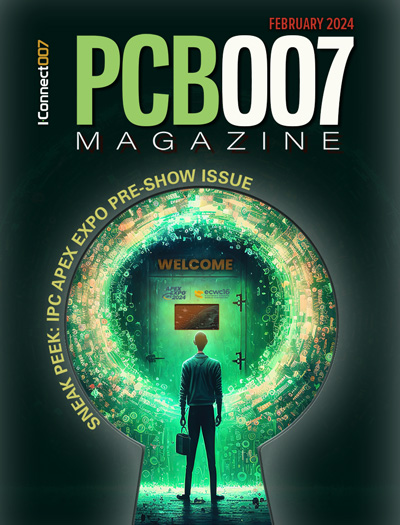-

- News
- Books
Featured Books
- pcb007 Magazine
Latest Issues
Current Issue
The Growing Industry
In this issue of PCB007 Magazine, we talk with leading economic experts, advocacy specialists in Washington, D.C., and PCB company leadership to get a well-rounded picture of what’s happening in the industry today. Don’t miss it.

The Sustainability Issue
Sustainability is one of the most widely used terms in business today, especially for electronics and manufacturing but what does it mean to you? We explore the environmental, business, and economic impacts.

The Fabricator’s Guide to IPC APEX EXPO
This issue previews many of the important events taking place at this year's show and highlights some changes and opportunities. So, buckle up. We are counting down to IPC APEX EXPO 2024.
- Articles
- Columns
Search Console
- Links
- Events
||| MENU - pcb007 Magazine
Estimated reading time: 1 minute
Contact Columnist Form
Digital Imaging Revisited
The advantages of digital circuitization techniques have been described in detail by suppliers of equipment and photoresist. Since phototool generation and conditioning are omitted, there is the advantage of shorter lead time. Small lots can be customized at no extra cost (e.g., with added date and lot number information). There may be an advantage in fine-line imaging of surfaces with poor co-planarity because of the depth of focus of the laser beam. But the biggest advantage may be the ability to “scale” (i.e., to change the dimension of each individual exposure for best fit to reference points on an underlying pattern of a multilayer structure). However, early digital imaging systems had substantial drawbacks, such as Orbotech’s DP100, which used an argon ion laser with limited radiation power, high power usage, and high cooling requirements.
For years, laser direct imaging (LDI) was synonymous with digital imaging. While most early, commercially successful digital processes involved the use of lasers, other more recent processes use non-laser light sources such as LEDs (light emitting diodes), or various types of mercury lamps, making use of more than one wavelength. Others use inkjet technology to build image patterns such as legend print, soldermask or etch resist. They all have in common the building of a pattern, pixel by pixel, and they employ digital on/off switches to form the pattern. The switch might be an optical modulator or an array of LCPs (liquid crystal polymer cells) that can be rendered translucent or opaque by addressing it with an electrical pulse.
Editor's Note: This article originally appeared in the November 2015 issue of The PCB Magazine.
More Columns from Karl's Tech Talk
Karl's Tech Talk: Digital Imaging UpdateKarl’s Tech Talk: Electronic Packaging Levels
Green Legislation and the Impact on Electronic Materials and Processes
Dry Film Photoresist Thickness Selection Criteria
Quick-Turn Circuit Board Shops
Optical Interconnects
Signal Loss
Karl's Tech Talk: Miniaturization and Reliability


